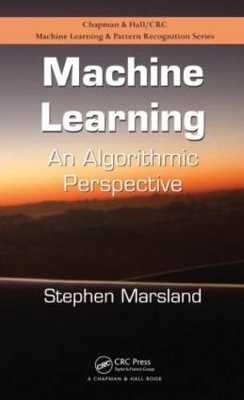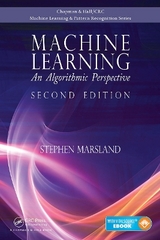
Machine Learning
Chapman & Hall/CRC
978-1-4200-6718-7 (ISBN)
- Titel erscheint in neuer Auflage
- Artikel merken
Traditional books on machine learning can be divided into two groups — those aimed at advanced undergraduates or early postgraduates with reasonable mathematical knowledge and those that are primers on how to code algorithms. The field is ready for a text that not only demonstrates how to use the algorithms that make up machine learning methods, but also provides the background needed to understand how and why these algorithms work. Machine Learning: An Algorithmic Perspective is that text.
Theory Backed up by Practical Examples
The book covers neural networks, graphical models, reinforcement learning, evolutionary algorithms, dimensionality reduction methods, and the important area of optimization. It treads the fine line between adequate academic rigor and overwhelming students with equations and mathematical concepts. The author addresses the topics in a practical way while providing complete information and references where other expositions can be found. He includes examples based on widely available datasets and practical and theoretical problems to test understanding and application of the material. The book describes algorithms with code examples backed up by a website that provides working implementations in Python. The author uses data from a variety of applications to demonstrate the methods and includes practical problems for students to solve.
Highlights a Range of Disciplines and Applications
Drawing from computer science, statistics, mathematics, and engineering, the multidisciplinary nature of machine learning is underscored by its applicability to areas ranging from finance to biology and medicine to physics and chemistry. Written in an easily accessible style, this book bridges the gaps between disciplines, providing the ideal blend of theory and practical, applicable knowledge.
Massey University, Palmerston North, New Zealand
Introduction
If Data Had Mass, The Earth Would Be a Black Hole
Learning
Types of Machine Learning
Supervised Learning
The Brain and the Neuron
Linear Discriminants
Preliminaries
The Perceptron
Linear Separability
Linear Regression
The Multi-Layer Perceptron
Going Forwards
Going Backwards: Back-propagation of Error
The Multi-Layer Perceptron in Practice
Examples of Using the MLP
Overview
Back-propagation Properly
Radial Basis Functions and Splines
Concepts
The Radial Basis Function (RBF) Network
The Curse of Dimensionality
Interpolation and Basis Functions
Support Vector Machines
Optimal Separation
Kernels
Learning With Trees
Using Decision Trees
Constructing Decision Trees
Classification And Regression Trees (CART)
Classification Example
Decision by Committee: Ensemble Learning
Boosting
Bagging
Different Ways to Combine Classifiers
Probability and Learning
Turning Data into Probabilities
Some Basic Statistics
Gaussian Mixture Models
Nearest Neighbour Methods
Unsupervised Learning
The k-Means Algorithm
Vector Quantisation
The Self-Organising Feature Map
Dimensionality Reduction
Linear Discriminant Analysis (LDA)
Principal Components Analysis (PCA)
Factor Analysis
Independent Components Analysis (ICA)
Locally Linear Embedding
Isomap
Optimisation and Search
Going Downhill
Least-Squares Optimisation
Conjugate Gradients
Search: Three Basic Approaches
Exploitation and Exploration
Simulated Annealing
Evolutionary Learning
The Genetic Algorithm (GA)
Generating Offspring: Genetic Operators
Using Genetic Algorithms
Genetic Programming
Combining Sampling with Evolutionary Learning
Reinforcement Learning
Overview
Example: Getting Lost
Markov Decision Processes
Values
Back On Holiday: Using Reinforcement Learning
The Difference Between Sarsa and Q-Learning
Uses of Reinforcement Learning
Markov Chain Monte Carlo (MCMC) Methods
Sampling
Monte Carlo or Bust
The Proposal Distribution
Markov Chain Monte Carlo
Graphical Models
Bayesian Networks
Markov Random Fields
Hidden Markov Models (HMM)
Tracking Methods
Python
Installing Python and Other Packages
Getting Started
Code Basics
Using NumPy and Matplotlib
| Erscheint lt. Verlag | 8.4.2009 |
|---|---|
| Zusatzinfo | 168 Illustrations, black and white |
| Sprache | englisch |
| Maße | 156 x 235 mm |
| Gewicht | 680 g |
| Themenwelt | Informatik ► Theorie / Studium ► Künstliche Intelligenz / Robotik |
| ISBN-10 | 1-4200-6718-4 / 1420067184 |
| ISBN-13 | 978-1-4200-6718-7 / 9781420067187 |
| Zustand | Neuware |
| Haben Sie eine Frage zum Produkt? |
